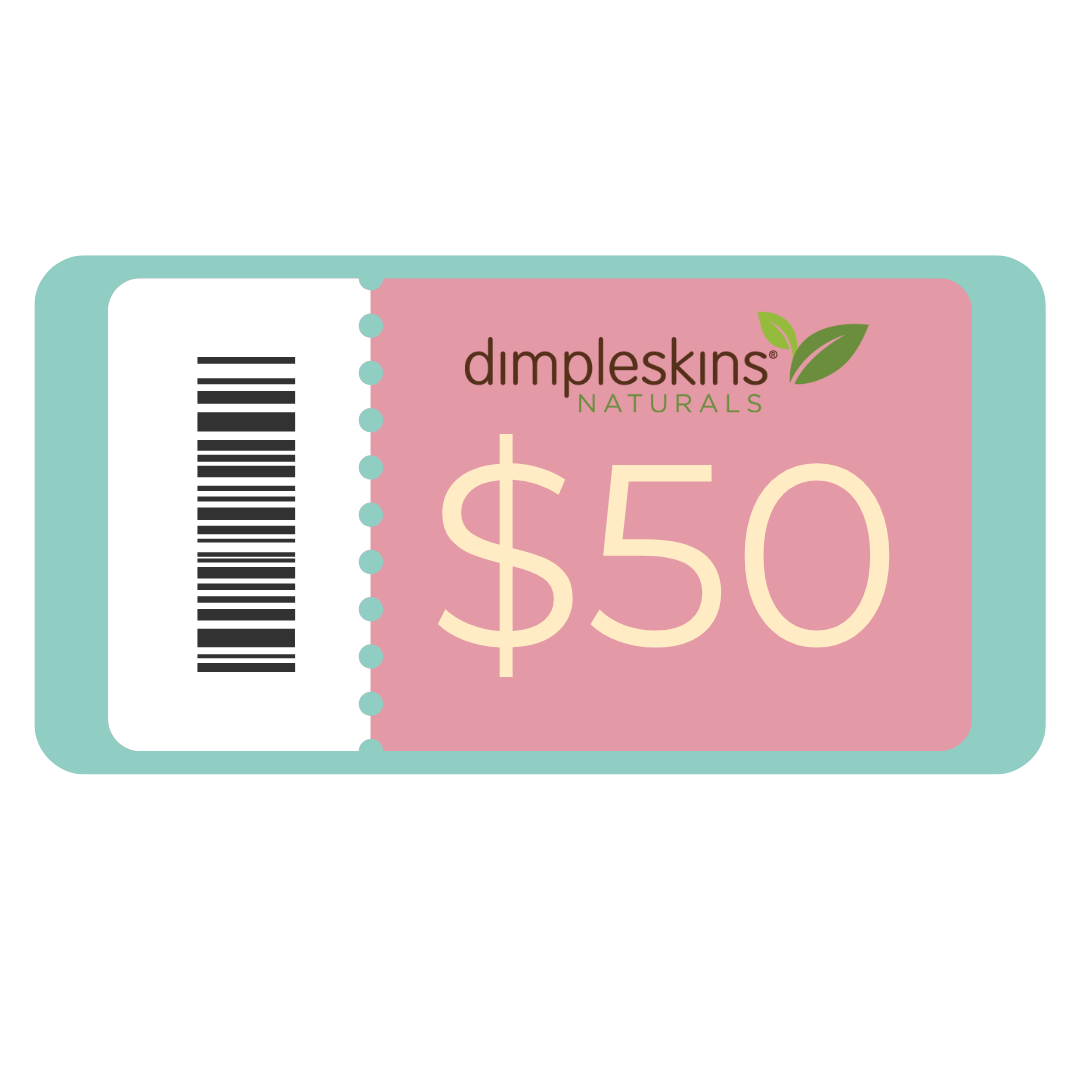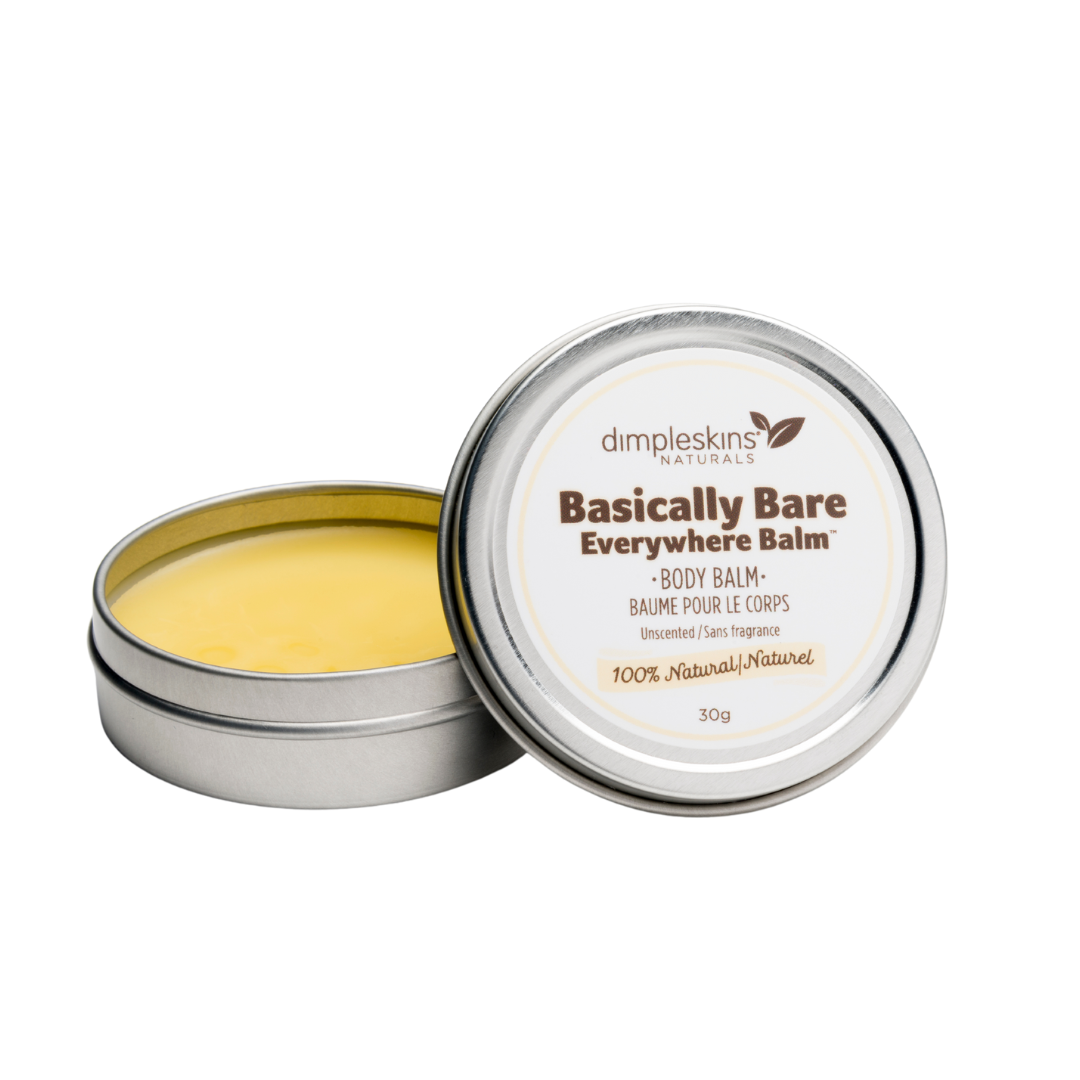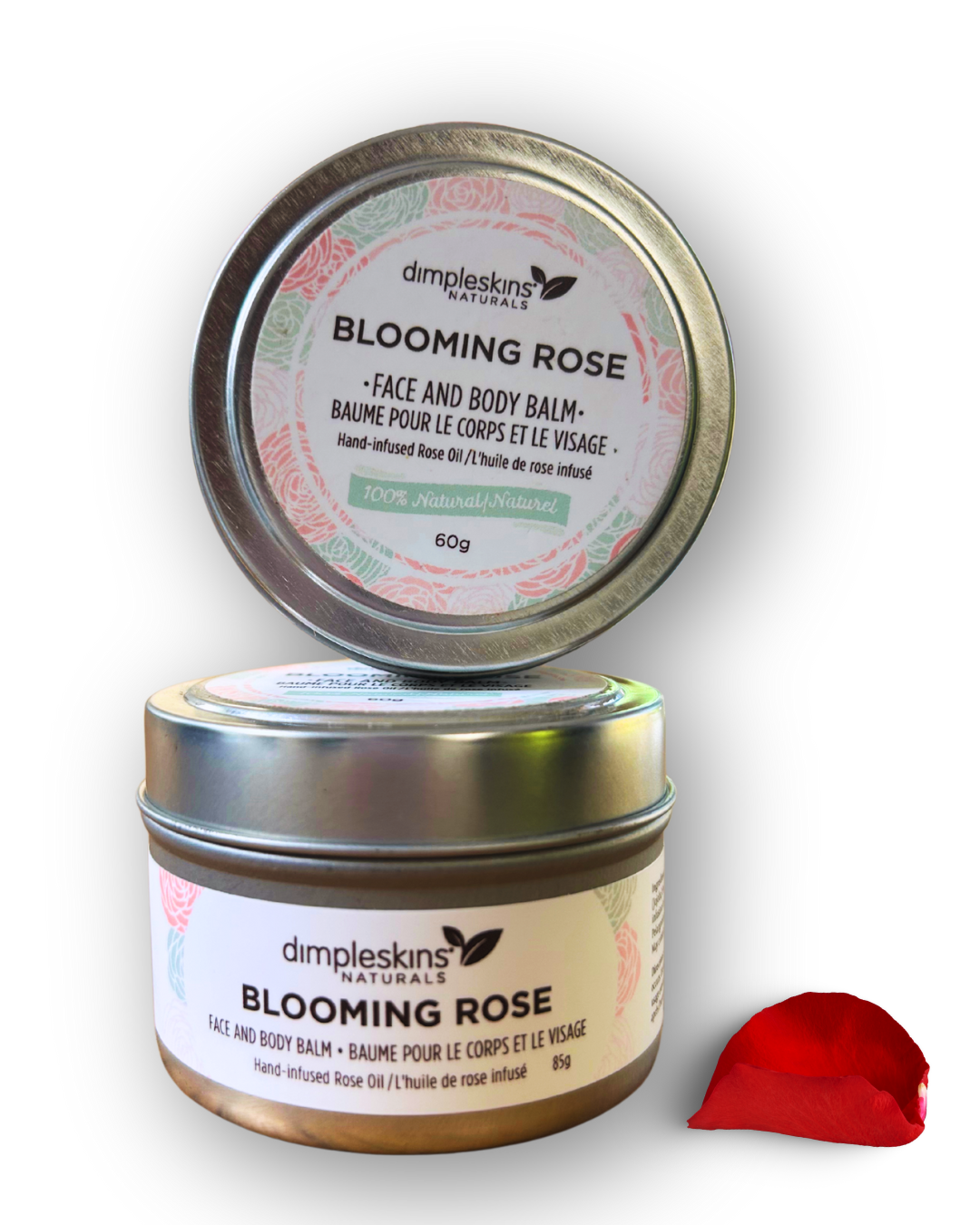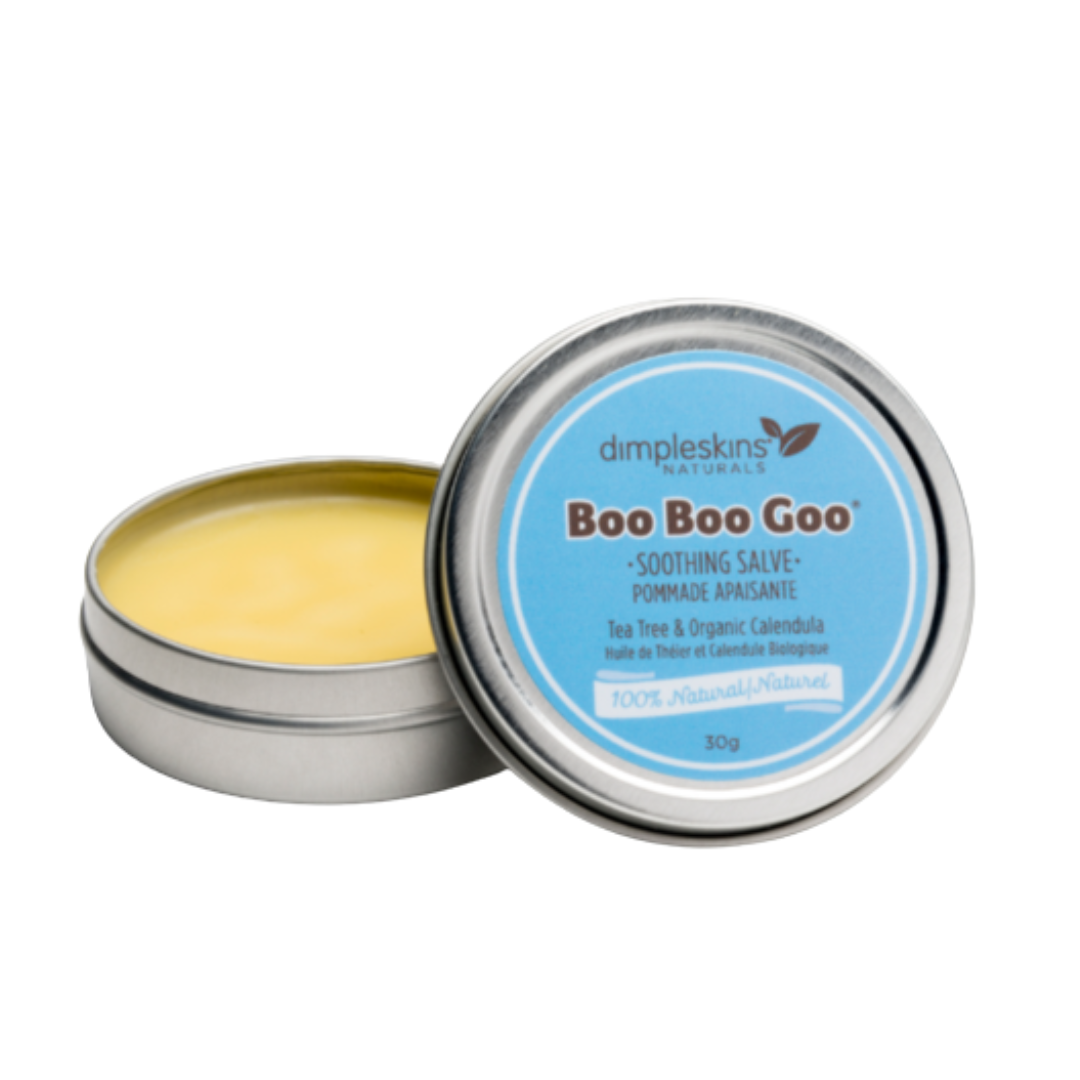Introducing solids is one of the most exciting milestones in your baby’s first year. Around six months of age, many little ones are ready to explore their very first tastes and textures. While this new adventure is fun, it can also feel overwhelming for parents—what should you start with, how do you prepare it, and what signs of allergies or sensitivities should you watch for?
The Dimpleskins founder is a Holistic Nutritionist and she is going to walk your through everything you need to know about baby’s first foods, plus a few important things to keep in mind when it comes to your little one’s digestion and skin.
When Is My Baby Ready for Solid Foods?
Most babies are ready for solids at about 6 months old, when they:
-
Can sit up with little support
-
Show good head and neck control
-
Start reaching for food or showing interest when others are eating
-
Have lost the tongue-thrust reflex (they no longer automatically push food out with their tongue)
Always check with your pediatrician or healthcare provider before introducing solids.
Best First Foods for Baby
When beginning solids, choose foods that are nutrient-rich, easy to digest, and soft in texture.
-
Iron-rich foods: Iron stores start to run low around 6 months, so offer pureed meats, poultry, lentils, or iron-fortified baby cereals
-
Fruits: Mashed bananas, steamed pears, peaches, or apples
-
Vegetables: Steamed and pureed carrots, sweet potatoes, peas, zucchini, or butternut squash
-
Healthy fats: Mashed avocado or a drizzle of olive oil in purees
Tips for Preparing Baby’s Food:
-
Steam or roast veggies until very soft. This baby food maker with steamer basket makes it easy
-
Mash with a fork or blend with a little breastmilk, formula, or water
-
Serve one food at a time so you can watch for reactions
-
Skip added salt, sugar, or honey (honey is unsafe under 1 year)
Food Allergies and Intolerances
Food allergies can feel scary, but introducing foods early and carefully is recommended. When trying a brand new food, the best way to introduce it is to do a spot test with the food on baby's cheek and wait an hour. If no reaction occurs, give them 1-2 teaspoons on day one. If there is still no reaction, proceed with more of the same food the next day. Signs of an allergy will occur immediately, whereas an intolerance can present as symptoms 2-3 days later.
Once you have "cleared" that food, it is ok to introduce another.
Common allergenic foods:
-
Cow’s milk
-
Eggs
-
Peanuts
-
Tree nuts
-
Soy
-
Wheat
-
Fish & shellfish
Signs of an allergic reaction:
-
Hives or rash
-
Swelling of face, lips, or tongue
-
Vomiting
-
Coughing or wheezing
-
Difficulty breathing (call 911 immediately)
Signs of a food intolerance (milder than an allergy):
-
Gas, bloating, or upset tummy
-
Loose stools or mucus in stool
-
Diaper rash after eating a certain food
Diaper Rash and Food Intolerance
As your baby’s digestive system learns to handle new foods, you may notice redness, irritation, or rash in the diaper area. This can sometimes happen when a food doesn’t sit well with your baby, or if stool becomes more acidic.
That’s where Bum Bum Balm comes in. Made with 100% natural ingredients, it creates a gentle protective barrier on baby’s skin, soothing irritation and keeping them comfortable while their tummy adjusts. Many parents keep it on hand when introducing new foods—it’s a diaper bag essential.
Q & A: Baby’s First Foods
Q: How often should I feed solids at 6 months?
A: Start with once a day and build up slowly. Breastmilk or formula should still be the main source of nutrition until 12 months.
Q: Do I need to give water with solids?
A: Small sips of water (1–2 oz at mealtimes) are fine once solids begin, but breastmilk or formula should remain the main drink. You can also mix breastmilk into baby's food.
Q: Should I start with fruits or veggies?
A: Either is fine! Some parents prefer veggies first to avoid developing a “sweet tooth,” but babies will naturally enjoy both.
Q: What if my baby refuses food?
A: That’s normal. Try again another day, and keep mealtime pressure-free. Sometimes it takes several tries for a baby to accept a new taste.
Final Thoughts
Starting solids is a messy, joyful, and memorable stage in your baby’s first year. By introducing foods slowly, watching for allergies, and keeping Bum Bum Balm close by for any diaper rash flare-ups, you’ll be well prepared for the journey.
Your baby’s first bites are the beginning of a lifelong relationship with food—enjoy every little squish, smile, and spoonful!






0 comments